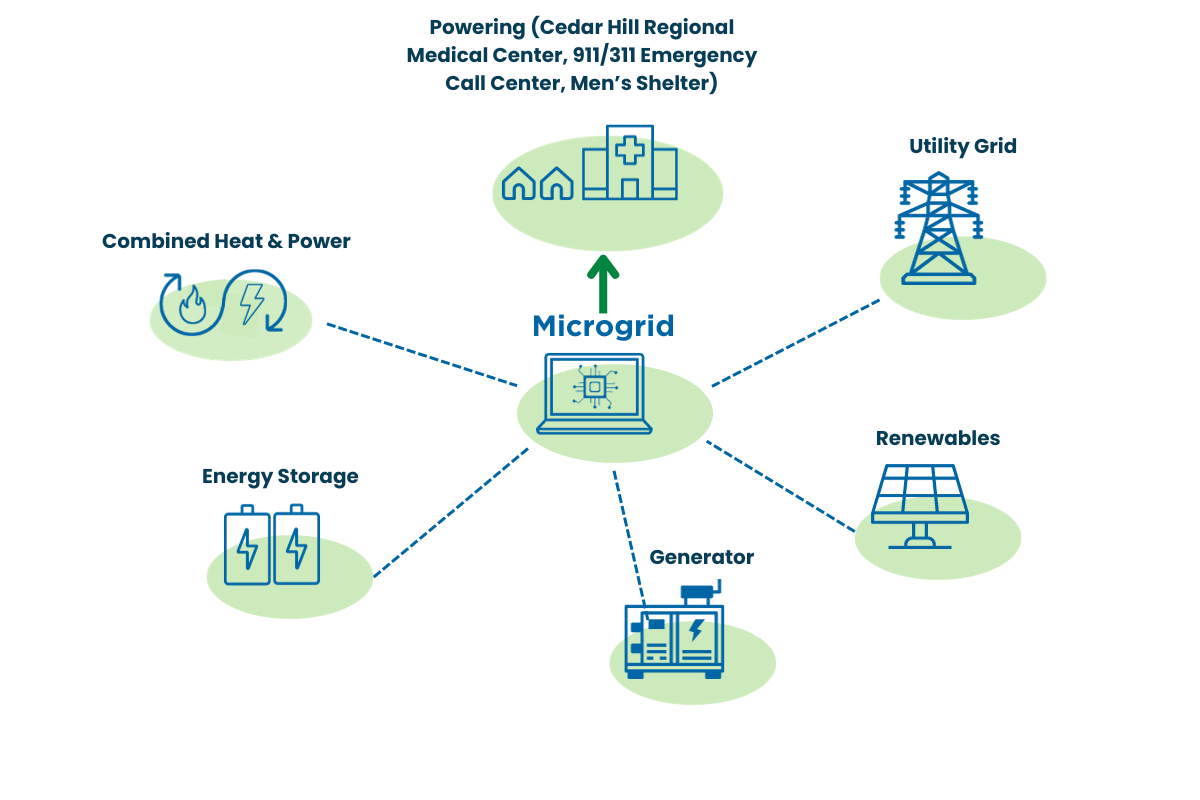
The first Federal Emergency Management Agency (FEMA)-funded microgrid project in the nation is being developed for St Elizabeths Hospital East Campus, Ward 8 in Washington, D.C.
The microgrid is expected to combine power from multiple sources including Pepco-provided grid services, solar-plus-battery, combined heat and power (CHP), and back-up generators. Most of the power is anticipated to be derived from onsite generation and supplemented by Pepco only as needed.
A microgrid can be both a primary and secondary source of power. The microgrid assets are designed serve the campus’ load during regular events and provide back-up power in the event that Pepco has a grid outage (as a result of a severe weather event or technical failure). This back-up power is designed to provide the “resiliency” benefit to the Cedar Hill Regional Medial Center GW Healthy and campus.
During construction of the Cedar Hill Regional Medical Center GW Health, the hospital will temporarily source its power through Pepco, as onsite generation assets will not yet be installed. By the time the hospital opens or soon thereafter, the CHP system is expected to be complete and solar panels are planned to be installed, requiring less electricity to be purchased from Pepco.
Operator Information: Ameresco was selected — through a competitive bid process — to design, develop, own, and operate the microgrid. Ameresco is an industry leader in delivering microgrids to hospitals, federal facilities, and other entities looking to protect mission critical functions.
The microgrid is expected to generate renewable electricity for the following facilities on the campus:
- Cedar Hill Regional Medical Center GW Health
- Men’s Shelter
- Mayor’s Citywide Call Center (3-1-1/9-1-1)
- Emergency Operations Center
How Does a Microgrid Work?
A microgrid is an innovative energy system that connects distributed energy sources like generators, renewable resources like solar panels, and batteries to nearby end users — in this case, the hospital, a newly constructed men’s shelter, and the District’s 9-1-1/3-1-1 emergency Unified Communication Center (UCC) — and provides these facilities with reliable power even in the event of an outage. A microgrid can prevent loss of power at these critical facilities by separating from the main grid and providing power from on-site generating sources. This microgrid is designed to reduce the need to use traditional, higher-pollutant power sources by using renewable energy such as solar, and local and clean energy resources.
St Elizabeths Campus Microgrid Benefits
This microgrid is a key initiative in the Resilient DC strategy, the Climate Ready DC plan, and the Clean Energy DC plan.
- The project is expected to allow critical loads to operate during electrical outages using modern, clean energy solutions.
- Redundant energy systems can ensure mission critical functions at the Hospital and the Mayor’s Citywide Call Center are always operational.
- While microgrids can draw on any energy generating technology, this microgrid is designed rely on renewable energy sources including solar.
- This microgrid is anticipated to improve the safety and the reliability of electrical infrastructure supplying power to the hospital and other mission critical services.
This project is expected to provide environmental and community benefits across Wards 7 and 8.
Environmental: Microgrids can reduce the need to use traditional, higher-pollutant power sources by using renewable energy such as solar — which is expected to be the first source of energy — as a local and clean energy source.
Community: The state-of-the-art hospital facility is expected to be operated by world-class energy generation technologies. The project is designed to support economic opportunities in Wards 7 and 8 and across DC through local workforce development and training, as well as through the use of local Certified Business Enterprise (CBE) contractors.
